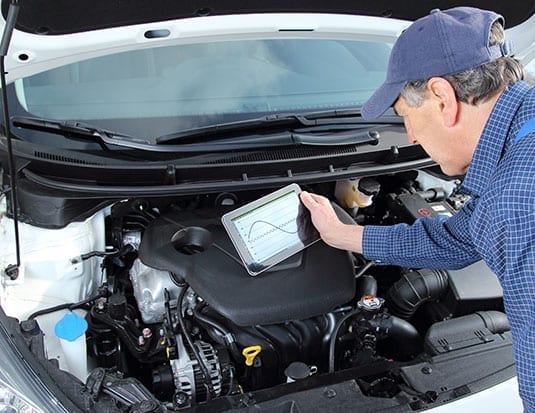In November 2018, General Motors announced that it would be winding down vehicle production at the Oshawa Assembly plant at the end of 2019.
The announcement came as part of a major restructuring plan. Oshawa Assembly currently builds the Chevrolet Impala, Cadillac XTS, and also handles final assembly for the 2018 Light Duty Chevy Silverado and GMC Sierra pickups.
The closing of the Oshawa production facility ties in with GM’s plans to focus much of its future research and development on electric and connected vehicles, as well as new forms of mobility including vehicle sharing and autonomous driving.
Next generation technologies
In 2016, I had written an article about diagnostics for today’s vehicles and in it had discussed GM’s decision to develop next-generation vehicle technologies.
At that time, CEO Mary Barra announced that GM would further develop new connected, autonomous and shared vehicles and mobility systems.
Now, following GM’s restructuring announcement, what does the future hold for the aftermarket and service/repair industry?
In a nutshell, we need to adapt.
Automotive shop owners, managers and technicians all need to be planning ahead so that independent garages remain the number one choice for their customers’ car care needs. We need to look at how we are actually serving our customers and the steps we need to take to ensure our livelihood both now and into the future.
Some of these include investment in diagnostic and repair training, live Webcasts, electric vehicle servicing as well as connected software learning. Sensors, radar, lidar and vehicle-to-vehicle communication are all technologies that are becoming increasingly commonplace. We need to be able to understand, diagnose and solve problems related to them.
Information will be coming from the cloud in real time, while personalized roadside assistance can tell the automotive service provider what a specific customer’s vehicle problems are without even having the car in the service bay!
Wide impact
These changes affect not only our business but also the parts suppliers and manufacturers, including delivery, aftersales service and inventory management.
It’s more important than ever to be able to share ideas and work together across different sectors of the automotive industry. That’s why initiatives such as the Right to Repair 2020 task force developed by AARO in conjunction with NASTF are seen as critical in helping Canadian automotive service providers moving forward.
Those of you who attended AARO’s Symposium and Trade Show on January 19 heard NASTF’s Executive Officer, Donny Seyfer, outline the changes to the Security Data Release Model 2.0 (SDRM). John Cochrane from Cochrane Automotive and Mark Lemay from Auto Aide (both AARO board members and Right to Repair 2020 taskforce members) also provided details on how to access the information and how to reprogram and fill out ‘SIR’s Service Information Requests—including updates on information to repair today’s vehicles.
I’d also like, at this point, to say a big thank you to all our members, sponsors and vendors that made this event and the sharing of such information possible.
There is no question that these are exciting times for our industry, and we need to work collectively to face changes coming our way both now and in the future.



